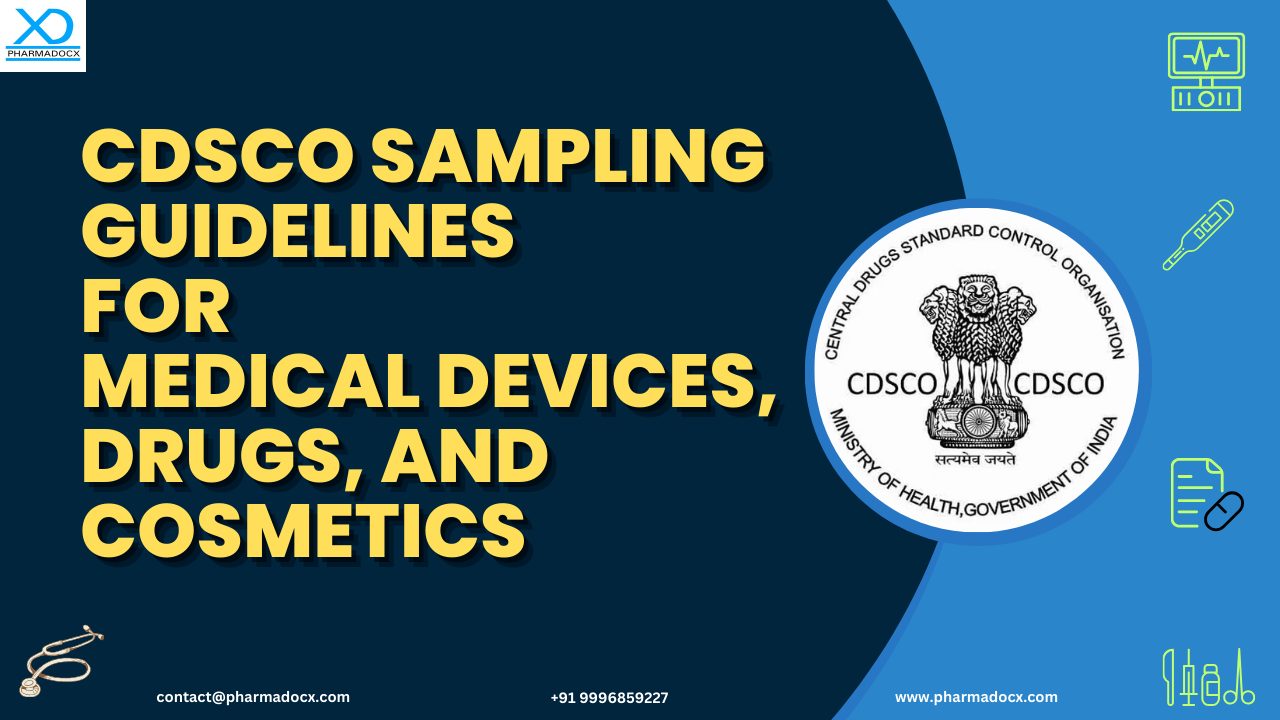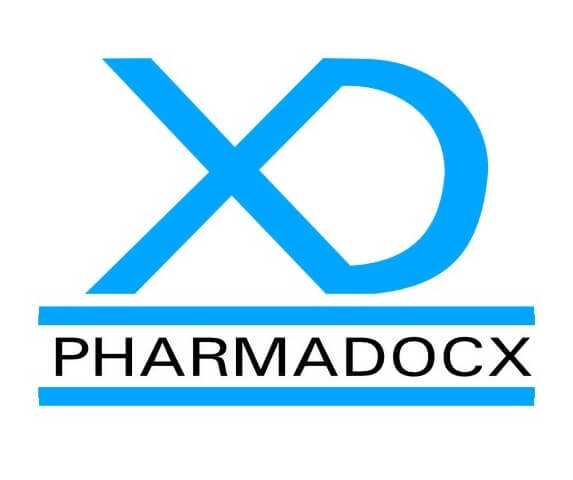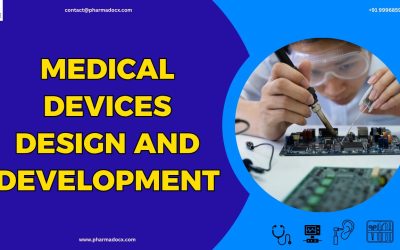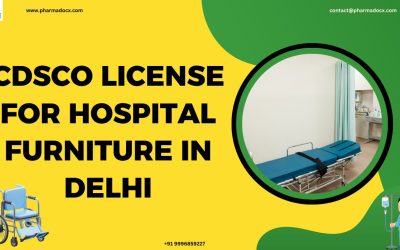Substandard medical devices and counterfeit drugs can have detrimental impact on patients, thereby paralyze the healthcare system. Recently, Central Drugs Standard Control Organization (CDSCO) issued new guidelines for sampling of medical devices, drugs, and cosmetics. These new sampling guidelines will ensure the quality, efficacy, and safety of drugs, cosmetics, and medical devices sold in India. By implementing these guidelines, the regulatory authorities can maintain the highest quality and safety standards in pharmaceutical and healthcare sectors. This will equally benefit patients and stakeholders.
Why is sampling of medical devices, drugs, and cosmetics necessary?
The quality and efficacy of drugs, medical devices, and cosmetics delivered to patients need to be monitored. Sampling these critical components of the healthcare industry will help evaluate their efficacy and quality. The drugs, medical devices, and cosmetics are sampled to record information on quality benchmark compliance. The data can be used to develop strategies and plans to ensure high-quality healthcare products are available in the market. Sampling ensures the patients are receiving high quality and safe healthcare products. Sampling of medical devices, drugs, and cosmetics validates the regulatory measures being used to monitor the healthcare products.
However, sampling of medical devices, drugs, and cosmetics is time and resource consuming. The limiting factors for the sampling process are as follows: the parameters tested, number of samples collected, analysis techniques, number of laboratories available to perform the analysis, and number of inspectors available. Therefore, it is important to carefully plan the sampling and analysis process. Parameters that pose a relatively high risk to patients should be focused on while analysing the product.
What led to the development of the new guidelines for sampling of medical devices, drugs, and cosmetics?
Previously, no defined sampling methodology for sample selection and sampling location determination was in place. This was performed based on the individual knowledge of drug inspectors. Samples were being collected from urban and suburban locations and big brands mainly. Samples were not being collected from rural and interior locations. Hence, the quality of products received by distant users/last users was not being evaluated.
High quality drugs and medical devices are essential for efficient and effective disease management. Poor quality medical devices and spurious drugs can cause treatment failure and adverse reactions. This can increase morbidity and mortality, thereby contribute to the development of drug resistance. Vulnerable patients with co-morbidities are at high risk of being affected upon receiving treatment with substandard medical devices and medicines.
Hence, CDSCO released new sampling guidelines for selecting the sample and sampling location by utilizing available information and identifying risks. The new guidelines will monitor a wide variety of drugs, cosmetic, and medical devices being sold in the India market. The new medical devices, drugs, and cosmetics sampling guidelines for effective surveillance is based on the uniform drug sampling methodology.
Previously, there was no centralised database where Not of Standard Quality (NSQ) or spurious products were being reported. Identified outlets selling NSQ or spurious products recorded on a database can be effectively monitored. Hence, there was an urgent need to maintain a comprehensive database to track NSQ and counterfeit products. Under the new regulatory guidelines, a centralized monthly NSQ/spurious product list will be maintained and published on the CDSCO website. This will create awareness to avoid further use of the reported NSQ/spurious products.
The Indian medical device and drug regulatory process already had various approval, inspection, and post-marketing surveillance requirements in place. The new guidelines for sampling of medical devices, drugs, and cosmetics aim to effectively utilize the resources. The new sampling guidelines will prioritize high-risk parameters and focus on risk analysis during sampling.
The new CDSCO regulatory guidelines for sampling of medical devices, drugs, and cosmetics
CDSCO released a new set of guidelines to streamline and rationalize the medical device, drug, and cosmetic sampling process. The regulatory guidelines state the sampling will be carried out by inspectors from Central and State Drug Authorities in India. Additionally, a monthly database of spurious or NSQ drugs will be maintained and published on the CDSCO website. The new guidelines highlight the pivotal role CDSCO plays in ensuring high-quality healthcare products are sold in the Indian market.
The guidelines focus on structured sampling plans, risk-based selection of parameters, and diverse sampling locations, including rural areas. The regulatory guidelines have also emphasized on the quantity and number of samples required. Detailed analysis of different healthcare products, including drugs, cosmetics, and medical devices, will require a certain sample quantity. The number and quantity of samples required for thorough analysis have been mentioned. Timelines for sample forwarding and method for analysis have been specified. The guidelines have also highlighted the need for reporting NSQ and counterfeit products to facilitate prompt regulatory actions. The role of testing laboratories has been outlined. A list of notified central and state laboratories for drugs, cosmetics, and medical devices has been provided.
As per the sampling guidelines, the designated drug inspectors, in consultation with the controlling authority, will prepare a sampling plan. The sampling plan will be prepared on a monthly and annual basis. The plan is expected to cover the entire jurisdiction under the office of the drug inspector. The drug inspector will select sampling locations based on certain parameters and select the samples based on risk factors. The entire process is expected to be completed within a timeline stipulated by the Central drug regulator.
The new guidelines have defined the following aspects of the sampling process:
- Sampling plans
- Sample selection
- Sampling locations
- Number and quantity of samples
- Timeliness
- Roles of testing laboratory
The main goals of the new CDSCO regulatory guidelines for sampling of medical devices, drugs, and cosmetics
The medical device, drug, and cosmetic sampling guidelines primarily aim to monitor the quality of products available in the market. The new CDSCO regulatory guidelines are focused at the following:
- Monitoring the quality of drugs, cosmetics, and medical devices in all parts of the distribution chain
- Ensuring that current control and monitoring methods are satisfactory
- Easily investigating and identifying the NSQ products
- Identifying outlets selling unapproved products or selling without license
- Identifying outlets repeatedly selling NSQ/spurious drugs
- Identifying spurious drugs and substandard medical devices in the distribution chain
Medical devices, drugs, and cosmetics sampling guidelines tighten the quality norms
High quality drugs and medical devices are vital for the healthcare system. Government regulatory bodies monitor and control these healthcare essentials to ensure patients receive effective treatment, thereby protect the public health. The new CDSCO guidelines for sampling of medical devices, drugs, and cosmetics will monitor the healthcare products in the market. The sampling guidelines focuses on manufacturing facility, wholesale outlet, retail outlet, government distribution channel in urban, sub-urban, and rural locations. Compliance with the CDSCO regulatory guidelines is a must to market medical devices and drugs in India. Navigating through the extensive regulatory requirements is cumbersome. A team seasoned in the Indian healthcare regulatory requirements can help manufacturers market and sell their products.
The new guidelines for sampling of medical devices, drugs, and cosmetics are vital for ensuring compliance with regulatory benchmarks. We at Pharmadocx Consultants are committed to help manufacturers abide by the Indian healthcare regulatory requirements. The Pharmadocx Consultants team has expertise in CDSCO medical device and drug registration process. With over 27 years of experience and more than 600 clients, Pharmadocx Consultants can make your CDSCO registration process seamless. Call/Whatsapp us at 9996859227 or drop an email at [email protected].





